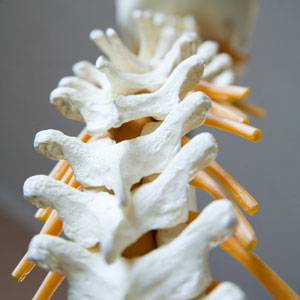Our Chiropractic Techniques
At Gallagher Family Chiropractic, we use a number of highly-effective adjusting approaches to help improve spinal biomechanics and reduce nervous system interference. The approach we use is based on our clinical judgment and years of experience.
The primary adjusting techniques we use include:
Diversified
 First, an analysis of your spine is performed. This can initially involve a case history and X-ray pictures of your spine. Subsequent visits may include motion palpation, with the chiropractor feeling the spinal joints move as you turn and bend. Or, a leg check may be performed, to uncover an imbalance in the neck or lower spine.
First, an analysis of your spine is performed. This can initially involve a case history and X-ray pictures of your spine. Subsequent visits may include motion palpation, with the chiropractor feeling the spinal joints move as you turn and bend. Or, a leg check may be performed, to uncover an imbalance in the neck or lower spine.
With the malposition of one or more spinal bones identified, a specific manual thrust is administered. The direction, speed, depth and angle that are used is the result of years of experience, practice and a thorough understanding of spinal mechanics.
The energy delivered during the thrust may produce a slight “popping” sound from the shifting of gas and fluids in the joint. This sound may be interesting, but is not a guide as to the value or effectiveness of the adjustment.
While improving spinal biomechanics can reduce nervous system interferences, virtually all joints of the body can be adjusted to help restore proper range of motion.
Gonstead
Named after its developer, Dr. Clarence Gonstead, this approach came from his engineering background. His “foundation principle” explains how a sub pattern in one area of the spine can produce compensatory changes in another.
Read More About Gonstead Technique
A Thorough Evaluation
After studying your health history, we conduct a complete examination. This generally includes full spine X-rays and precise analysis. Using a small heat-sensing instrument, sub patterns are revealed by slight differences in temperature. Finally, we use our fingertips to “palpate” or feel the location of individual bones and how they may differ from their normal position.
Full Spine Correction
With a complete picture of your spine it’s time to make the needed corrections.
To adjust your lower spine and pelvis, we’ll have you lie on your side. Subs in the middle back are corrected as you assume a comfortable kneeling position. When you are seated, we can restore the integrity of your spine without twisting or rotating your neck.
Sometimes you’ll hear a slight “popping” sound that we call cavitation. Sometimes you won’t. Either way, better health is on the way!
Safe and Effective
The Gonstead Technique is acknowledged as one of the safest systems of evaluating and caring for the spine.
Myofascial Release
Myofascial Release is a hands-on, whole-body approach for the evaluation and treatment of pain and the restoration of motion. This involves muscles and the connective tissue (fascia) that holds your entire body together.
Read More About Myofascial Release
You Body’s Body Suit
Think of fascia as a densely woven fabric, like a sweater, that connects all your organs, muscles and tissues, even your heart, blood vessels, lungs and spinal cord. Fascia “holds you together.” Since it covers you from head to toe, think of it as a body suit that you live in.
When you’re healthy, the fascia is relaxed. Like our clothing, it has the ability to stretch and move without restriction. But that changes when we experience physical trauma, scarring or inflammation. Then, the fascia loses its pliability. It can become tight, restricted and a source of tension, reduced motion and even producing pain.
What You Can Expect
First, we’ll conduct a thorough evaluation, looking at your posture, your ability to turn, bend and move. We’ll identify specific movements that produce increased pain or discomfort.
Then, we’ll use our hands to locate the tender areas. Gently stretching the fascia and involved muscles causes them to release. This is not a massage! You’ll have some homework: drinking more water. By drinking more than your usual water intake, you’ll help flush out toxins that have built up and reduce soreness.
Your New Normal
Progress is rarely a straight line. Expect some ups and downs as your body learns it can abandon its defensive posture. As your body heals, your brain will eventually recognize your new posture and muscle tone as normal. With time, expect better movement, more strength, flexibility, improved posture and greater vitality.
Ready to Get Started?
If you’ve been to a chiropractor before and prefer to be adjusted in a particular way, let us know. We want you to relax, enjoy and fully benefit from your chiropractic care. Contact us today to make an appointment with our Orefield chiropractor.
CONTACT US »
